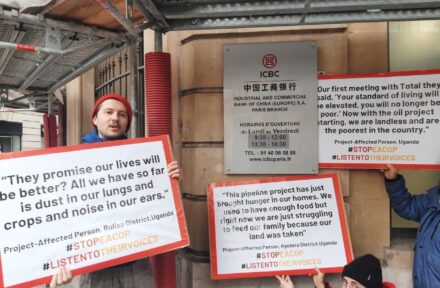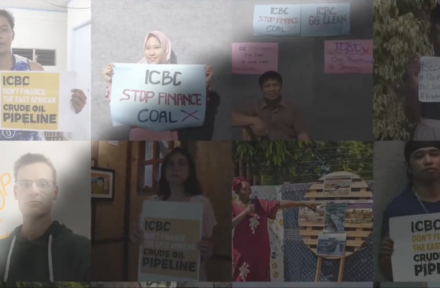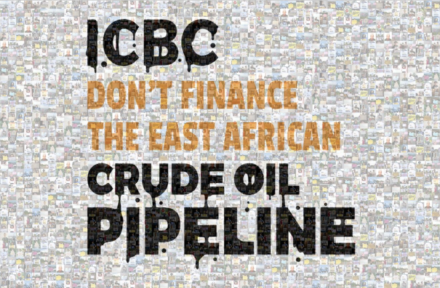Written by Kennedy Nyavaya
UPDATE: This story was first published in May 2021 and we have since then learned that ICBC has pulled out of the Sengwa coal plant project, which is a good step but they are still involved in the Hwange coal project.
Zimbabwe is in the midst of a renewable energy renaissance, with over 80 independent renewable energy projects registered in the last 10 years. However, the country’s renewables industry remains desperate for financial support, as less than 5% of their expected 7,000 megawatt (MW) output has come online.
For industry insiders, like Nyangani Renewable Energy (NRE) Managing Director Ian McKersie, the failure of these projects to come online is largely attributed to a shortage in local and capital, but he is particularly concerned about the lack of much needed foreign direct investments (FDI).

“Energy generation projects are extremely capital intensive and for the scale of energy investment that we need here, that amount of capital is not on offer,” says Nyangani Renewable Energy (NRE) managing director engineer Ian McKersie.
All the while, international investors like the Industrial and Commercial Bank of China are undercutting the industry’s growth with the continued expansion of the country’s coal industry, even after the International Energy Agency has emphasised the critical need to decarbonise.
Despite having every intention for a diverse energy system, Zimbabwe’s independent energy producers are struggling. According to the latest report by the Parliamentary Portfolio Committee on Energy and Power Development, Independent Power Producers (IPPs) have only been able to capture 3% of the nation’s energy network.
About 80% of those registered so far are focused on clean energy production.
Nyangani Renewable Energy is one of these Independent Power Producers which runs mini-hydro electric projects and solar farms across rural parts of Zimbabwe. This is exactly the type of decentralised renewable power that is desperately needed across a country that suffers daily blackouts and critical power issues. However, according to McKersie, the much needed foreign investment his company needs to buy materials produced internationally has just not come, especially given the uncertainty of the economy.

“There is a large forex [foreign currency] component needed to purchase the equipment… The ideal funding solution is for FDI to fund the forex component and any portion of the local component not able to be funded adequately from the local sources of finance,” McKersie said.
But, every time McKersie has sought this out, he has been told by investors that the economic insecurity in Zimbabwe is too much of a risk.
“If an investor cannot see a clear line of sight between his investment and the returns promised by that investment, he will be reluctant to invest,” McKersie adds.
However, this uncertainty doesn’t seem to have impacted many of the country’s coal projects, as it has been far easier for coal mining corporations to lure the interest of foreign investors.
The Chinese state-owned Industrial and Commercial Bank of China (ICBC) is one of the biggest, and through its partners, they are currently financing the two biggest coal projects in the country.
This includes the US$1.5 Billion dollar expansion to the Hwange Power Station, the biggest coal-fired power facility in Zimbabwe. The investments will lead to a 600MW increase to the existing 920MW coal plant capacity.
The second is a US$3 Billion investment towards the Sengwa Thermal Power project. This co-financing collaboration between local energy company Rio Energy Ltd and China Gezhouba Group Corp, a firm funded by ICBC, aims to produce 2,800 MW.
At a time when capital is supposedly scarce for renewable energy pursuits, these billion-dollar projects towards coal exploitation could lock out smaller renewable energy producers and lock in Zimbabwe’s industries to a coal-powered future.
For some, including Zimbabwean climate change and mitigation expert, Lawrence Mashungu, there is a fear that these investments could even become a burden. “If companies and the government fail to look at all these aspects, we will be left with stranded assets in the future because the world is fast shifting towards clean energy.”
Mashungu is hopeful that the country is in the midst of “a major shift from the initial plans we had in terms of energy production as a country.” However, he is concerned that the “phased approach” towards renewable energy technology outlined in the newly adopted National Renewable Energy Policy (NREP) may not be fully realised.
The policy’s aim is “to increase access to clean and affordable energy through the addition of installed RE (Renewable Energy).” However, the biggest factor holding that renewable energy capacity back remains the lack of interest from local and foreign investors.

From a social perspective, one could argue that some of these investors, like ICBC and its partners, are supporting Zimbabwe to break out of its energy crises. However, when you talk to local Independent Power Producers like Ian McKersie, and experts like Lawrence Mashungu, it is hard not to wonder why these massive coal-powered expansions are preferred over small scale renewable energy initiatives align directly with the government’s national policy focus.
It is also hard not to wonder if the billions of dollars being pumped into the Hwange and Sengwa coal power projects will not, as Lawrence Mashungu highlighted, leave Zimbabweans with a set of stranded assets they will have to repay for generations to come.
About the author
Kennedy Nyavaya
Kennedy is a multi-award winning, enterprising and hardworking communication practitioner with over half a decade of experience in mainstream media and public relations for civic organizations. In a journalism career spanning over half a decade, he has reported on various events, including those officiated by government officials and international diplomats and wrote different articles cutting across different topics, albeit with a keen interest in human rights, the environment and climate change.
He won Renewable Energy Reporter of the year 2020, Best ICT journalist 2018 (National Journalism and Media Awards), Sanitation and Hygiene journalist of 2018 (National Journalism and Media Awards).
This story was made possible through the support of Climate Tracker.




